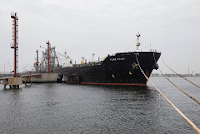Dinner invites referring Bharat rather than India have fueled
a political row and public debate over what the country should be called as the
country prepares to welcome world leaders for the G20 summit.
Invites issued by the “President of Bharat,” instead of the
customary “President of India,” were sent to delegates from the world’s 20 top
economies for a dinner to be hosted by Indian President Droupadi Murmu on
Saturday.
Both India and Bharat are used officially in the nation of
1.4 billion people, which has more than 20 official languages.
“India, that is Bharat, shall be a Union of States,” the country’s
constitution states.
Bharat is also the Hindi word for India and is used
interchangeably – both feature on Indian passports for example.
But its use on the invites marks a notable change in the
naming convention used by the country on the international stage under Prime
Minister Narendra Modi and his Hindu-nationalist Bharatiya Janata Party (BJP).
The G20 summit is a first for India as Modi aims to raise
New Delhi’s global clout following nearly a decade-long tenure in power in
which he has positioned himself as a leader intent on shedding the country’s
colonial past – emphasizing the need to liberate ourselves from the slavery
mindset.
Britain ruled India for about 200 years until it gained
independence in 1947 and those who prefer Bharat say the name the country is
best known by globally is a remnant of the colonial era.
The
name India has been derived by ancient Western civilizations from the Sanskrit
word for the Indus River – Sindhu – and was later adapted by the British
Empire.
“The word ‘India’ is an
abuse given to us by the British, whereas the word ‘Bharat’ is a symbol of our
culture,” Harnath Singh Yadav, a BJP politician, told Indian broadcaster ANI.
Meanwhile, former India cricket star Virender Sehwag urged
the sport’s officials to use Bharat on players’ shirts during the Men’s Cricket
World Cup, which will be held in India this year.
“We are Bhartiyas, India is a name given by the British and
it has been long overdue to get our original name ‘Bharat’ back officially,” he
said on social media.
During its time in power, Modi’s government has made steps
to steer the country away from what it has called “vestiges of British rule”
and to free itself from its “colonial baggage.”
These efforts also include renaming roads and buildings
related to both India’s Mughal as well as its colonial past.
For example, in 2022, the government renamed Rajpath, a
3-kilometer (1.8-mile) boulevard formerly known as Kingsway that runs through
the heart of New Delhi. The new official name, Kartavya Path, would “remove any
trace of colonial mindset,” the government said.
And in 2018, three Indian islands named after British rulers
were renamed in the Andaman and Nicobar Islands, to erase “these signs of
slavery.”
But the
use of “Bharat” on the G20 invites has raised eyebrows among opposition
leaders.
“While
there is no constitutional objection to calling India ‘Bharat’, which is one of
the country’s two official names, I hope the government will not be so foolish
as to completely dispense with ‘India’, which has incalculable brand value
built up over centuries,” Shashi Tharoor, a former diplomat and prominent
lawmaker from the main opposition Congress party, said on social media.
Tharoor is also the author of “Inglorious Empire”, a work of
non-fiction that excoriates colonial Britain’s rule of India.
India's opposition is uniting to unseat Modi in next year's
election. Should he be worried?
In July, the leaders from 26 Indian opposition parties
formed an alliance – known as INDIA (or the Indian National Developmental
Inclusive Alliance) – in a bid to unseat Modi in the next general election.
Coined to evoke a sense of nationalism ahead of the 2024
polls, the INDIA alliance said its goal was upholding the country’s democratic
institutions.
Modi’s government has come under scrutiny from rights groups
and opposition lawmakers for its increasingly strident brand of Hindu
nationalist politics, an ongoing crackdown on dissent, and a tightening grip on
the country’s democratic institutions.
Modi has denied a crackdown, saying in a rare June press
conference at the White House that when “there are no human rights, then it’s
not a democracy,” and “there’s absolutely no space for discrimination” in the
country.
Some
opposition politicians said the government’s use of Bharat was a response to
the formation of the INDIA alliance.
“How can the BJP strike down ‘INDIA’? The country doesn’t
belong to a political party; it belongs to [all] Indians,” Aam Aadmi Party
lawmaker Raghav Chadha, an alliance member, said on social media. “Our national
identity is not the BJP’s personal property that it can modify on whims and
fancies.”
But in an interview with ANI, India’s Minister of External
Affairs S. Jaishankar said India “is Bharat.”
“It is there in the constitution. I would invite everybody
to read it,” he said.
“When you say Bharat,” it evokes a “sense, a meaning and a connotation,” he
said.
“I think that is reflected in our constitution as well






